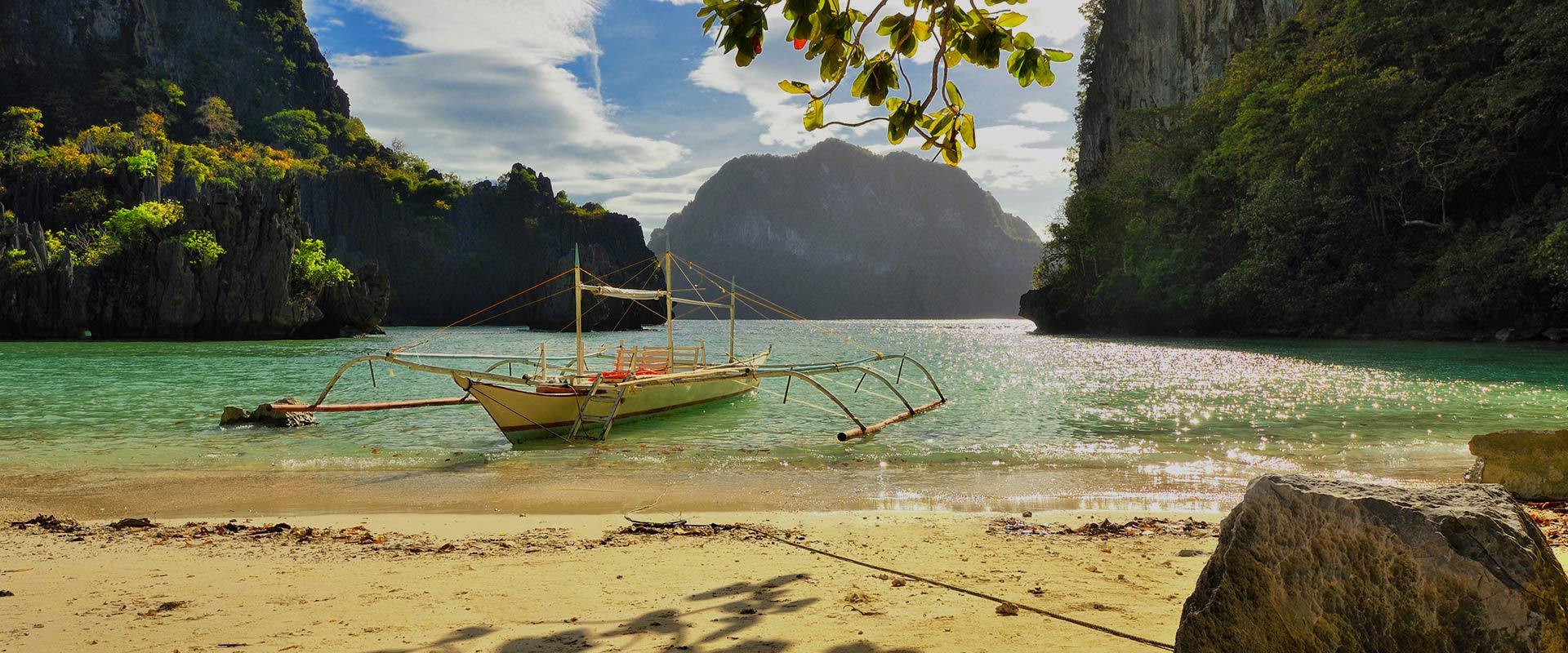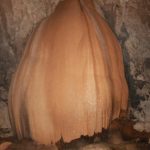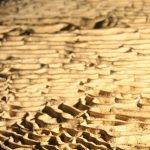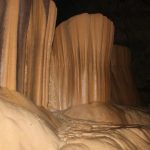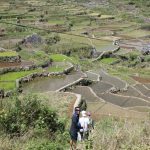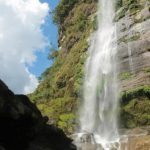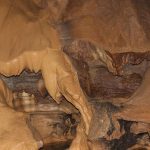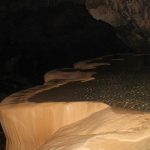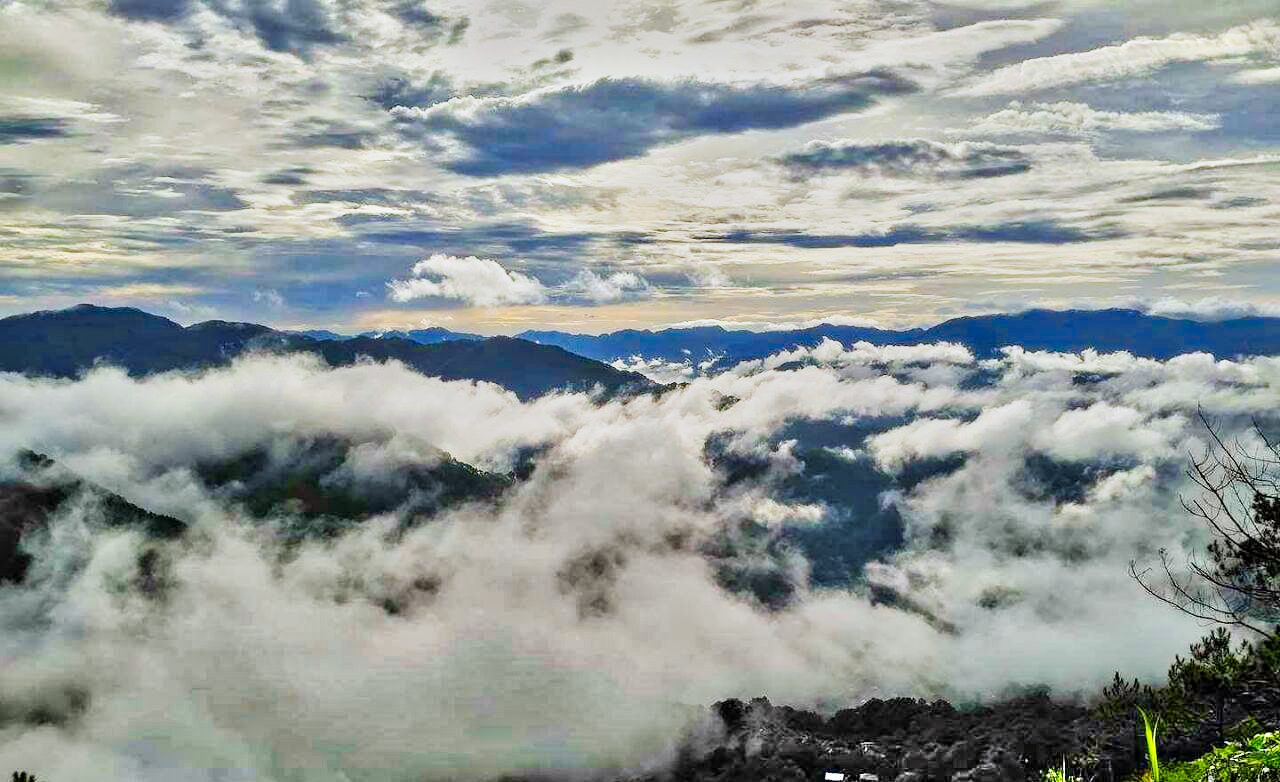
Sagada, The mountainous province.
Sagada, located in the northern highland, stands above diverse and rich landscapes of the Cordillera mountains, between the central Cordillera range and the Ilocos range. In this picturesque province, you can enjoy a cool and refreshing atmosphere scented with pine trees, rocky terrain, and waterfalls, all blended harmoniously with the rich cultural heritage of the local people. Landmarks like the Kapay aw rice terraces and the hanging graves add to the unique charm of this place.
Legend has it that the people of the Cordillera mountains did not keep written records, and the village of Sagada, or “Ili” in the local language, was founded by one man named Biag and his family from the eastern Abra region in Bikaln. They were forcibly driven from their home by rival tribes. When Biag’s family settled in Condon, they were again forced to flee when the practice of baptizing with Christian names was imposed by the Spanish colonizers. Biag separated from his brothers who chose to settle in other areas, while he and his core family continued to wander eastward until they eventually settled on the land that is present-day Sagada.
Perhaps due to its remoteness and rugged terrain, a Spanish expedition only settled in Ayala in 1881, just a few years before the final collapse of Spanish rule. Thus, the native culture was almost entirely preserved, sheltered from colonial influence.
Sagada offers a wide range of activities for adventurous travelers, including trekking, waterfalls, rock climbing, cave exploration, historical sites, tribal ceremonies, and rituals. All of these experiences and more await daring travelers in Sagada. Don’t worry; you can find local guides at the Sagada Tourism Office immediately upon your registration (for a nominal fee), and they are very friendly and hospitable.
How to Get There
Sagada is located approximately 400 km from Manila, in the heart of Luzon Island. There are daily buses that make the journey from Manila to Baguio. Victor Liner, one of the major bus companies, operates a regular route departing from the terminal every hour. The travel time is around 6 hours, and the journey to Sagada through Baguio gives you the opportunity to explore the ‘Summer Capital of the Philippines.’
From Baguio, you will need an additional 6 hours of travel on a local bus to reach Bontoc, the capital of the mountainous province. From there, you can take a jeepney to Sagada. If you’re up for a challenging adventure, you can try sitting on the roof of the jeepney during the ride.
Another option is to rent a car with a driver from Manila or organize a tour from Manila that combines the trip to Sagada with visits to Banaue and its breathtaking rice terraces.
Attractions
Sumaguing Cave, the most popular and extensively explored cave in Sagada, offers a wide variety of stunning rock formations. A deep exploration of the cave, which takes about 3 to 4 hours, will leave you mesmerized by the intricate natural beauty of the rock formations that appear as if ancient artists carved them, but are, in fact, the handiwork of nature itself. Enchanting and captivating, Sumaguing Cave is definitely worth a visit. It is important to exercise caution while exploring these caves due to the slippery rocks, varying heights within different areas of the cave, and the need to preserve the delicate cave environment.
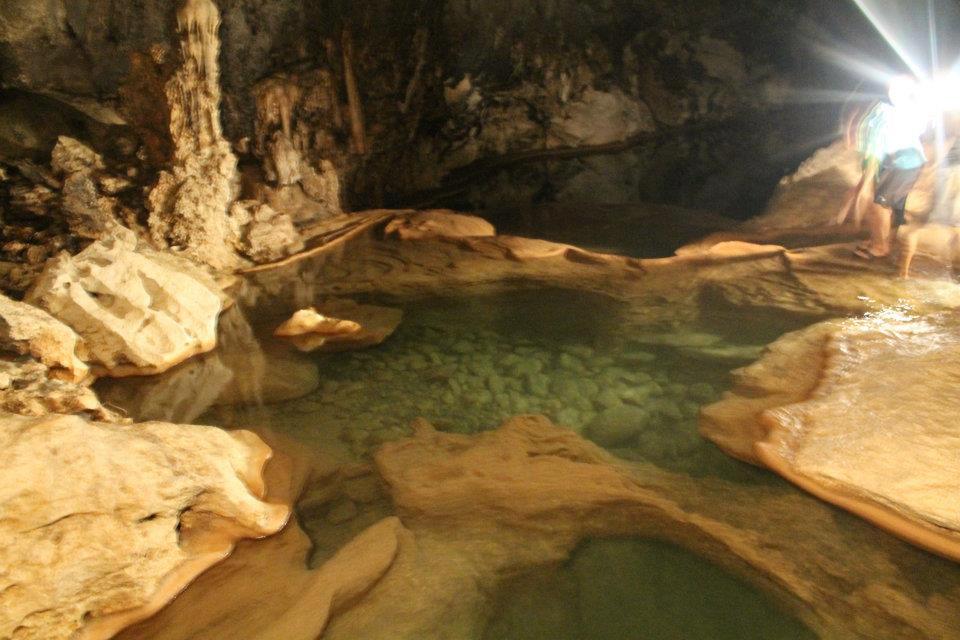
The hanging coffins in Echo Valley have become one of the most sought-after tourist attractions in the Cordillera Mountains. However, it’s worth noting the location where they are situated, the Echo Valley. Not only are you allowed to shout in the Echo Valley, but it is recommended and even desired to do so as much as possible, as the topography of the valley prevents sounds from carrying from one end to the other.
This ancient burial tradition, which is an integral part of Sagada’s culture for over two thousand years, involves the practice of hanging the dead, and it has become synonymous with Sagada and the Echo Valley. Typically, only selected and highly respected members of the tribe, especially the elders, are entitled to this unique burial practice. The bodies of the deceased undergo a smoking process for five days before burial to prevent decomposition, and then they are placed in wooden coffins, often crafted by the individuals themselves, using hollowed-out tree trunks. These coffins are then placed on the cliffs in the mountains.
Most people in Sagada prefer this type of burial because they believe that the higher the body is placed, the closer it will be to paradise. It also serves as a way to protect the body from natural disasters like typhoons and earthquakes.
Lumiang Burial Caves: A 30-second walk from the town itself will take you to the Lumiang Burial Caves, where at least 200 hanging coffins have been placed over more than 500 years. The coffins are neatly arranged, and you can view them from the cave entrance.
Baomod-Ok Waterfalls: If you enjoy a scenic walk that leads to breathtaking waterfalls, then the trail to Baomod-Ok Waterfalls is a must. The entire trail is a full-day adventure, as it covers a distance of 4.2 kilometers through well-maintained rice terraces.
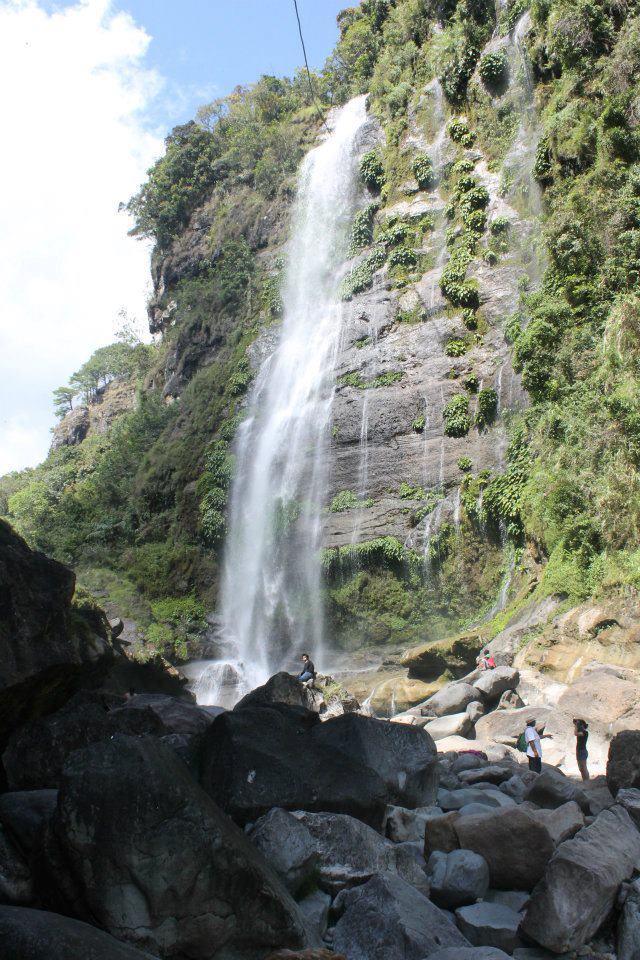
Kiltepan: For those interested in the perfect sunrise that seems to emerge from the dark mountains, majestic and imposing, there is no more perfect place than the Kiltepan summit. The extraordinary sunrise never ceases to impress and amaze.
Kapay Aw Rice Terraces: One of Sagada’s rice terraces (including Kiltepan, Ferdilisan, and more), you can see this cluster of rice terraces during the trek leading to Sumaguing Cave. Their color is particularly vibrant in February or March when the farmers plant the rice, and golden during the harvest season. They are perfect for stunning photos and for those who simply want to enjoy the wonderful beauty of nature in one of the few places on Earth where people live in complete harmony with their surroundings. Truly beautiful and beloved.
Mount Ampacao: At an elevation of 1889 meters above sea level, Mount Ampacao is considered the highest peak in Sagada, and you don’t need a guide to climb it. The starting point is right next to Ambasing Elementary School, and you can relatively easily ascend to the summit as the trail leading to it is quite clear, and there’s no chance of getting lost. The view from the summit is simply breathtaking, as you can see various mountain ranges in all their glory to the north, including Mount Sipsitan, Mount Polis, Mount Bessang, and Mount Tirad, with Tirad Pass and its historical significance. Absolutely amazing!
Ganduyan Museum: The Ganduyan Museum is located in the center of the town. It is a private museum owned by Christina Aben, which presents the culture, traditions, and history of Sagada, its people – the Kankaney, and also the Cordillera region. The museum exhibits art objects, sculptures, baskets, wall hangings, metalwork, weapons, various items, furniture, and more. In Ganduyan, which is essentially the traditional local name of Sagada, you can find everything you need to know about Sagada and the Cordillera region. The owner herself is an expert on the subject and has a particularly rich and diverse knowledge.
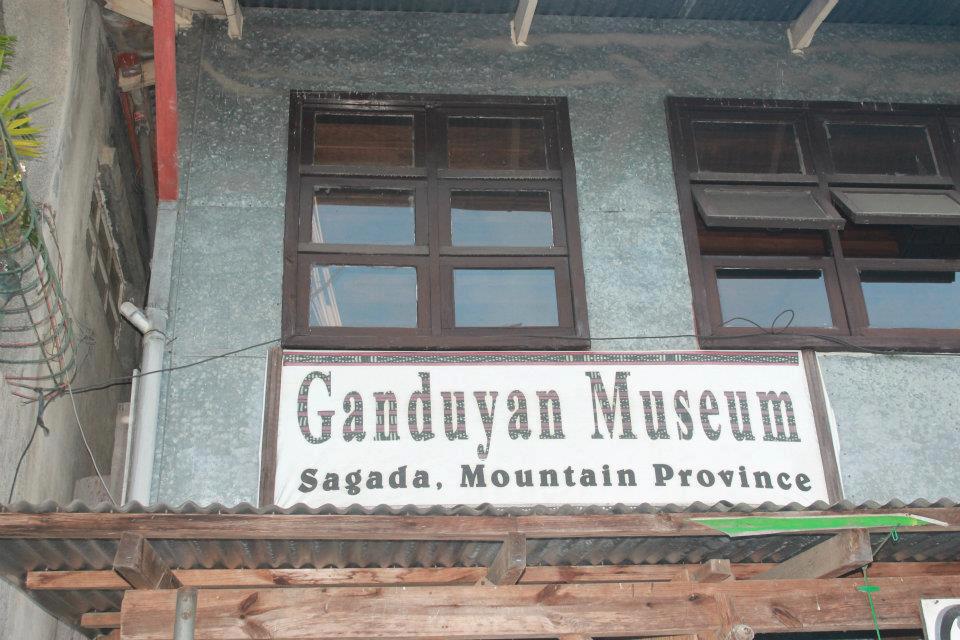
The Episcopal Church of St. Mary. Due to its unique status as the only Protestant town in the Philippines, Sagada’s religious site is the Episcopal Church of St. Mary, located within the Anglican compound. It is an old stone church built in 1904 by American missionaries and is characterized by beautiful stained glass windows and magnificent blue doors.
Recommended Activities:
- Ziplining on the Kapay Aw Rice Terraces: Undoubtedly one of the adventurous activities in Sagada. Ziplining is perfect for those who enjoy fast-paced adrenaline-filled adventures while enjoying the breathtaking views of the Kapay Aw Rice Terraces. Be sure to check if it is still operational!
- Food Tours: Since Sagada is a well-known tourist destination, its restaurants offer a wide variety of delicious dishes. Among the famous restaurants, you can find Masferre, LemonPie House, and Yogurt House. These restaurants offer tasty and diverse menus.
- Souvenir Shopping: Explore the weaving and souvenir shops of Sagada. Handwoven products, shirts and t-shirts, wooden carvings, tea from the mountains, and more are some of the items you can purchase in souvenir shops. Since the locals are known for their talented craftsmanship, it’s highly recommended to check out the handcrafted wooden items and sturdy and beautiful bags. They make ideal gifts or house decor.
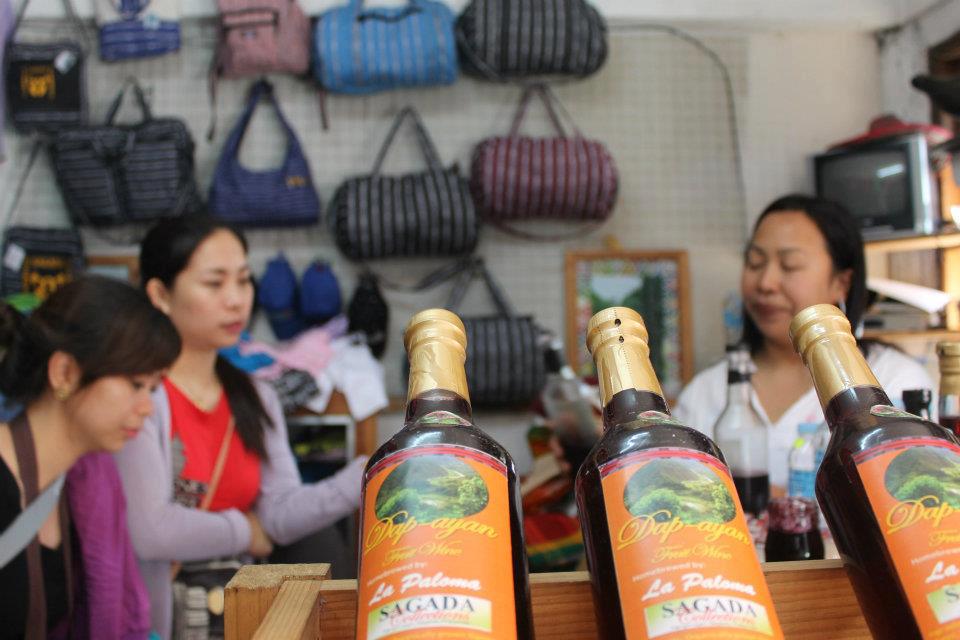
The full photo gallery of the trip to Sagada:
General Note on the Trip to Sagada:
The main attraction in the town of Sagada is the connecting caves. An experience lasting between 2-4 hours, depending on the chosen route. It is an amazing experience, although quite dangerous.
In tours organized by Tourismo Filipino, visiting the caves is not always included due to the risks involved in case of rescue from the cave. If you do not visit the caves, there may not always be a point in going to Sagada, but Sagada is definitely an interesting town even without visiting the caves, and some have truly fallen in love with it.
If you choose to tour the connecting caves, we will provide you with trained professional guides, or alternatively, the guide will join you independently at the local visitor center.
A guide accompanying you on behalf of our agency will join you, escorting you from Banaue and back. The return journey takes about two and a half to three hours for overnight accommodation in Banaue (departure from Banaue should not be later than 15:00 due to road conditions and weather). Of course, you can choose to stay longer in Sagada and extend your stay.


